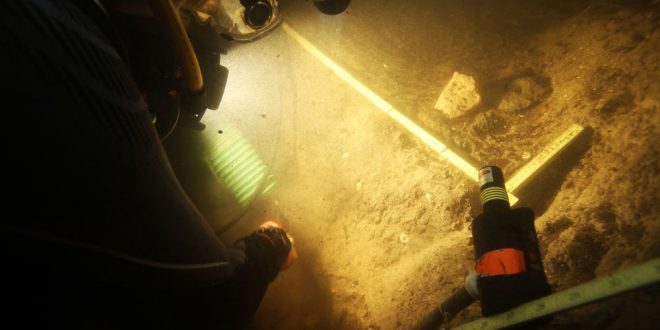Evidence has emerged of an ancient civilization of mastodon hunters that was extant 15,000 years ago in present-day Florida.
The finding was made on the Aucilla River. It is a 45 minute drive from Tallahassee. This happens to be the oldest site where ancient human beings lived in the southeastern United States. It goes back some 15,000 years in the past.
“This is a big deal,” said Florida State University Assistant Professor of Anthropology Jessi Halligan. “There were people here. So how did they live? This has opened up a whole new line of inquiry for us as scientists as we try to understand the settlement of the Americas.”
There is a cluster of sites all over North America that date to around 13,200 years old, but there are only about five in all of North and South America that are older.
Halligan and her colleagues, including Michael Waters from Texas A&M University and Daniel Fisher from University of Michigan, excavated what’s called the Page-Ladson site, which is located about 30 feet underwater in a sinkhole in the Aucilla River. The site was named after Buddy Page, a diver who first brought the site to the attention of archaeologists in the 1980s, and the Ladson family, which owns the property.
In the 1980s and 1990s, researchers James Dunbar and David Webb investigated the site and retrieved several stone tools and a mastodon tusk with cut marks from a tool in a layer more than 14,000 years old. However, the findings received little attention because they were considered too old to be real and questionable because they were found underwater.
Waters and Halligan, who is a diver, had maintained an interest in the site and believed that it was worth another look. Between 2012 and 2014, divers, including Dunbar, excavated stone tools and bones of extinct animals.
They found a biface — a knife with sharp edges on both sides that is used for cutting and butchering animals — as well as other tools. Fisher, a vertebrate paleontologist, also took another look at the mastodon tusk that Dunbar had retrieved during the earlier excavations and found it displayed obvious signs of cutting created to remove the tusk from the skull.
The tusk may have been removed to gain access to edible tissue at its base, Fisher said.
“Each tusk this size would have had more than 15 pounds of tender, nutritious tissue in its pulp cavity, and that would certainly have been of value,” he said.
Another possible reason to extract a tusk is that ancient humans who lived in this same area are known to have used ivory to make weapons, he added.
Using the latest radiocarbon dating techniques, researchers found all artifacts dated about 14,550 years ago. Prior to this discovery, scientists believed a group of people called Clovis — considered among the first inhabitants of the Americas —settled the area about 13,200 years ago.
“The new discoveries at Page-Ladson show that people were living in the Gulf Coast area much earlier than believed,” said Waters, director of Texas A&M’s Center for the Study of the First Americans.
Added Halligan: “It’s pretty exciting. We thought we knew the answers to how and when we got here, but now the story is changing.”
Agencies/Canadajournal
 Canada Journal – News of the World Articles and videos to bring you the biggest Canadian news stories from across the country every day
Canada Journal – News of the World Articles and videos to bring you the biggest Canadian news stories from across the country every day



